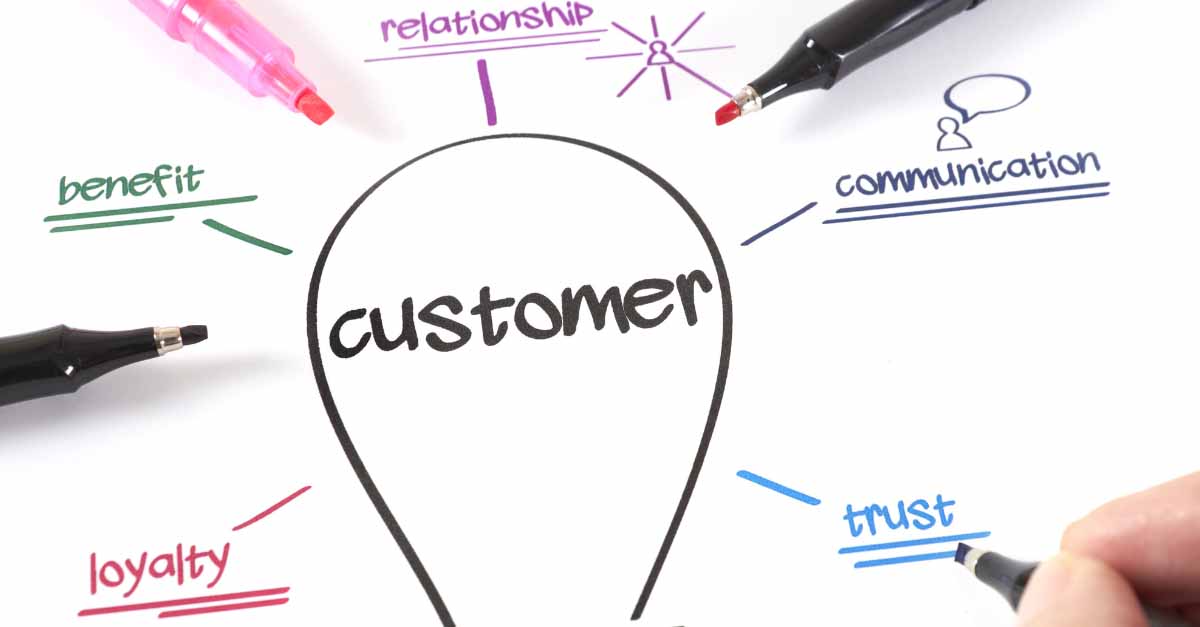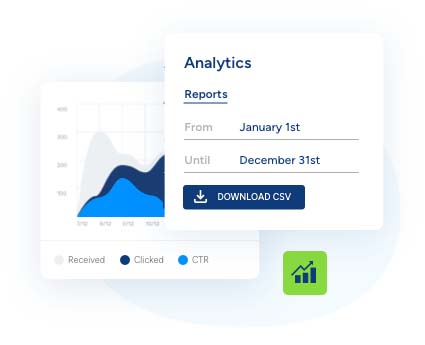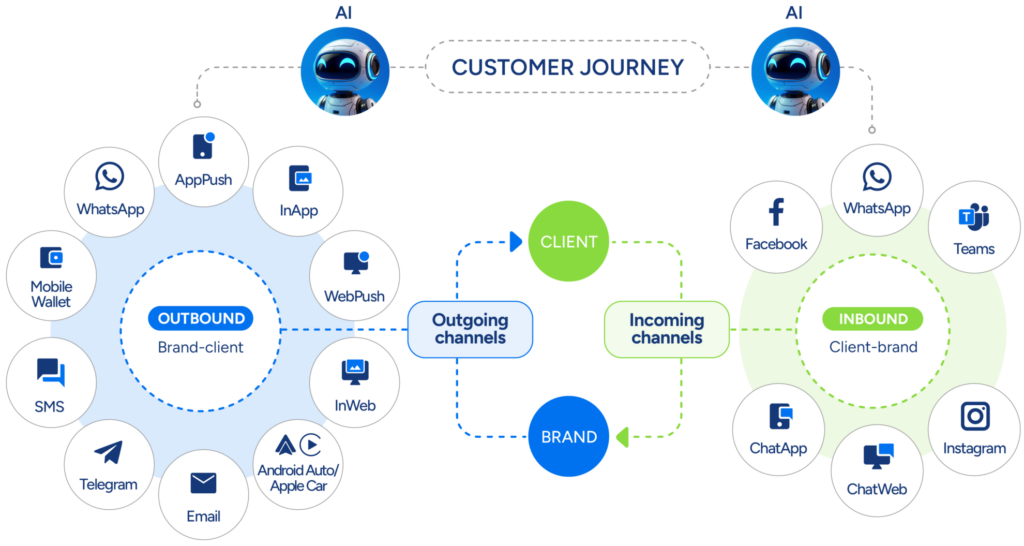
Omnichannel Customer Journey: Everything You Need to Know
Overview
- Introduction
- What is an Omnichannel Customer Journey?
- Understanding the Omnichannel Customer Journey
- Comparing Omnichannel, Multichannel, and Single-Channel Strategies
- Benefits of Adopting an Omnichannel Customer Journey
- Key Components of an Omnichannel Customer Journey
- Steps to Create an Effective Omnichannel Customer Journey

- Strategies for Enhancing the Omnichannel Experience
- Personalization Techniques to Engage Customers Effectively
- Leveraging Technology for Improved Communication
- Challenges in Implementing an Omnichannel Strategy
- Common Obstacles Businesses Face
- Solutions to Overcome These Challenges
- How indigitall Can Help Brands Transform Their Omnichannel Customer Journey
- 1. Comprehensive Customer Journey Mapping
- 2. Seamless Integration Across Channels
- 3. Advanced Personalization
- 4. Automation and Efficiency



- 5. Analytics and Insights
- 6. Enhanced Customer Experience
- 7. Non-Invasive User Engagement
- Conclusion
Introduction
The path a customer takes from initial awareness to final purchase—and beyond—has transformed into a complex web of interactions across multiple channels. The omnichannel customer journey is no longer a linear experience; it’s a dynamic and fluid process shaped by various touchpoints, including websites, social media, email, mobile apps, and in-store experiences. Understanding this journey is crucial for businesses aiming to create seamless, personalized experiences that resonate with their audience.
This blog will explore the intricacies of the omnichannel customer journey, detailing how to effectively create, manage, and optimize each stage. By delving into strategies that enhance customer engagement and satisfaction, we will uncover the essential elements that drive success in today’s multifaceted marketplace. Join us as we navigate the landscape of omnichannel marketing and discover how to turn every interaction into an opportunity for lasting connection and loyalty.
What is an Omnichannel Customer Journey?
An omnichannel customer journey is a seamless, interconnected experience that unfolds across multiple touchpoints as a customer interacts with a brand. It’s the digital-age equivalent of a well-choreographed dance, where each step flows naturally into the next, regardless of the platform or channel involved.
Unlike traditional multichannel approaches, which often operate in silos, an omnichannel journey weaves together various interaction points into a cohesive narrative. This could include:
- Browsing products on a mobile app
- Checking reviews on social media
- Making a purchase on a desktop website
- Picking up the order in-store
- Receiving post-purchase support via chat
The key differentiator is that information flows freely between these touchpoints, creating a unified experience. For instance, a customer’s browsing history on the mobile app might inform personalized recommendations when they later visit the website.
Characteristics of an Omnichannel Journey:
- Consistency: Brand messaging, visuals, and tone remain uniform across all channels.
- Continuity: Interactions pick up where they left off, even when switching devices or platforms.
- Personalization: Each touchpoint is tailored based on the customer’s previous interactions and preferences.
- Flexibility: Customers can seamlessly transition between channels without losing context or progress.
An effective omnichannel journey not only enhances customer satisfaction but also provides businesses with a holistic view of customer behavior. This comprehensive understanding allows companies to refine their strategies, optimize touchpoints, and ultimately drive loyalty and revenue growth.
Understanding the Omnichannel Customer Journey
The concept of the omnichannel customer journey emerged as a response to the rapidly changing consumer behavior in the digital age. Its origins can be traced back to the early 2010s when businesses began to recognize the limitations of traditional single-channel and multichannel approaches.
As smartphones became ubiquitous and e-commerce grew exponentially, customers started interacting with brands across multiple touchpoints. This shift in consumer behavior created a need for a more integrated approach to customer engagement. Businesses realized that customers expected a consistent and seamless experience regardless of how they chose to interact with a brand.
The omnichannel concept was born out of this realization, aiming to create a unified customer experience across all channels. It was driven by several factors:
- Technological advancements: The rise of cloud computing, big data analytics, and AI made it possible to integrate and analyze customer data from various sources.
- Changing consumer expectations: Customers began to demand personalized experiences and the ability to switch between channels effortlessly.
- Competitive pressure: As some businesses started adopting omnichannel strategies, others followed suit to remain competitive.
- Retail evolution: The blending of online and offline shopping experiences necessitated a more integrated approach to customer engagement.


Comparing Omnichannel, Multichannel, and Single-Channel Strategies
To understand the significance of the omnichannel approach, it’s helpful to compare it with its predecessors:
Aspect | Single-Channel | Multichannel | Omnichannel |
Focus | One primary channel | Multiple separate channels | Integrated channels |
Customer Experience | Limited to one touchpoint | Varied across channels | Seamless across all touchpoints |
Data Integration | Minimal | Partial | Comprehensive |
Personalization | Limited | Channel-specific | Holistic and consistent |
Customer Journey | Linear | Fragmented | Fluid and interconnected |
Single-Channel Strategy:
- Focuses on one primary channel (e.g., physical store or website)
- Limited customer data and engagement opportunities
- Simplest to implement but least flexible for customers
Multichannel Strategy:
- Utilizes multiple channels independently
- Offers more choice but lacks integration between channels
- Can lead to inconsistent customer experiences
Omnichannel Strategy:
- Integrates all channels for a unified experience
- Provides seamless transitions between touchpoints
- Offers personalized experiences based on comprehensive customer data
The omnichannel approach represents a significant evolution in customer engagement strategies, addressing the limitations of its predecessors by creating a cohesive, customer-centric experience across all touchpoints.
Benefits of Adopting an Omnichannel Customer Journey
Implementing an omnichannel strategy offers numerous advantages for businesses looking to enhance their customer experience and drive growth. Here are the key benefits:
1. Enhanced Customer Experience and Satisfaction
- Provides a personalized and frictionless shopping experience across all touchpoints.
- Ensures consistent brand messaging and product information, regardless of the channel.
- Enables seamless transitions between channels, meeting modern customer expectations.
- Increases customer satisfaction by offering convenience and relevant interactions.
2. Improved Customer Retention and Loyalty
- Boosts customer loyalty through positive and consistent experiences across platforms.
- Increases the likelihood of repeat purchases and higher average order values.
- Cultivates brand advocates who promote the business through word-of-mouth and positive reviews.
- More cost-effective than constantly acquiring new customers.
3. Increased Revenue and Sales
- Customers using multiple channels tend to spend more than single-channel shoppers.
- Provides more opportunities for upselling and cross-selling through various touchpoints.
- Reduces cart abandonment by offering a smoother purchasing process.
- Improves conversion rates through personalized recommendations and consistent messaging.
4. Better Data Collection and Insights
- Allows for comprehensive data gathering from multiple sources and platforms.
- Provides a more complete picture of customer behavior and preferences.
- Enables data-driven decision-making for marketing strategies and product development.
- Facilitates more accurate personalization and targeting of marketing efforts.
5. Operational Efficiency and Cost Reduction
- Streamlines customer service processes by unifying data across channels.
- Reduces support costs through effective call deflection and channel optimization.
- Enables more efficient resource allocation by identifying the most impactful channels.
- Simplifies data collection and strategy implementation across touchpoints.
6. Competitive Advantage
- Positions the business to meet evolving customer expectations in the digital age.
- Allows for quick adaptation to new channels and technologies.
- Differentiates the brand by offering a superior, integrated customer experience.
7. Enhanced Brand Consistency and Trust
- Ensures a uniform brand experience across all customer interactions.
- Builds trust through consistent messaging and reliable service across channels.
- Improves brand recognition and recall through cohesive omnichannel presence.
By adopting an omnichannel customer journey, businesses can create a more engaging, efficient, and profitable relationship with their customers, leading to long-term success in an increasingly competitive marketplace.
Key Components of an Omnichannel Customer Journey
Creating an effective omnichannel customer journey involves several key components that ensure a seamless and integrated experience for customers across all touchpoints. These components are essential for understanding customer behavior, optimizing interactions, and enhancing overall satisfaction.
Customer Research
Conducting thorough customer research is the foundation of an omnichannel strategy. It involves collecting and analyzing data to understand customer needs, preferences, and behaviors. This research helps in:
- Identifying Customer Personas: Creating detailed profiles of typical customers to tailor experiences and communications.
- Mapping Customer Touchpoints: Understanding where and how customers interact with the brand across different channels.
- Gathering Insights: Using surveys, interviews, and analytics to gain insights into customer expectations and pain points.
By understanding these aspects, businesses can design a journey that meets customer needs at every stage.
Stages of the Customer Journey
The omnichannel customer journey is typically divided into several stages, each representing a phase in the customer’s interaction with the brand. While models may vary, a common framework includes:
- Awareness Stage
- Customers become aware of the brand or product through advertising, social media, or word-of-mouth.
- The focus is on capturing attention and providing initial information.
- Consideration Stage
- Customers evaluate the brand as a potential solution to their needs, comparing it with competitors.
- Content such as blog posts, case studies, and product comparisons are crucial at this stage.
- Evaluation Stage
- Customers narrow down their options and assess specific features, benefits, and pricing.
- They may read reviews or interact with sales representatives for more information.
- Purchase Stage
- The decision to buy is made, involving completing transactions and selecting payment options.
- A smooth checkout process is vital to minimize cart abandonment.
- Onboarding Stage
- Post-purchase, customers learn how to use the product or service effectively through tutorials or customer support.
- Effective onboarding ensures customer satisfaction and reduces churn.
- Engagement Stage
- Customers actively use the product or service, engaging with its features and deriving value.
- Regular usage and interactions with support or loyalty programs occur in this stage.
- Retention Stage
- Efforts focus on maintaining customer satisfaction to encourage repeat purchases.
- Personalized offers and proactive support play a key role in retention.
- Advocacy Stage
- Satisfied customers become brand advocates, sharing positive experiences and referring others.
- This stage contributes to organic growth through word-of-mouth marketing.
Understanding these stages helps businesses optimize each phase of the journey, ensuring that customers receive consistent and personalized experiences throughout their interactions with the brand. By aligning strategies with these stages, companies can enhance customer engagement and build long-term loyalty.
Steps to Create an Effective Omnichannel Customer Journey
Creating an effective omnichannel customer journey requires a strategic approach. Here are the key steps to develop a comprehensive and seamless experience for your customers:
Step 1: Create Buyer Personas
Understanding your target audience is crucial for crafting a relevant and engaging omnichannel experience. Buyer personas help you visualize and understand your ideal customers.
Importance of understanding target demographics and psychographics:
Demographic data (age, gender, income, location) provides a basic profile of your customer base.
Psychographic information (values, interests, lifestyle, behaviors) offers deeper insights into customer motivations and preferences.
Together, these data points allow you to tailor your messaging, product offerings, and channel strategies to meet specific customer needs and expectations.
Step 2: Map the Customer Journey
Visualizing how customers interact with your brand across various channels helps identify opportunities for improvement and consistency.
Techniques for visualizing customer interactions across channels:
Create a visual flowchart or diagram showing typical paths customers take from awareness to purchase and beyond.
Use customer journey mapping tools to illustrate touchpoints, emotions, and pain points at each stage.
Conduct customer interviews and surveys to validate and refine your journey map.
Analyze data from various channels to understand common patterns and behaviors.
Step 3: Identify Touchpoints and Micro-Conversions
Recognizing all potential interaction points helps ensure a cohesive experience throughout the customer journey.
Importance of recognizing all potential interaction points:
Identify both major touchpoints (e.g., website visits, purchases) and micro-conversions (e.g., newsletter sign-ups, social media interactions).
Understand how these touchpoints contribute to the overall customer experience and conversion process.
Ensure consistency in messaging and branding across all touchpoints.
Look for opportunities to create seamless transitions between channels.
Step 4: Implement the Right Tools
Utilizing appropriate technology is essential for managing and optimizing an omnichannel strategy.
Overview of tools like CRM systems, marketing automation, and analytics software:
Customer Relationship Management (CRM) systems: Centralize customer data and interactions across channels.
Marketing Automation: Streamline and personalize marketing efforts across multiple channels.
Analytics Software: Track and analyze customer behavior and campaign performance.
Content Management Systems (CMS): Manage and distribute content consistently across channels.
Customer Data Platforms (CDP): Unify customer data from various sources for a comprehensive view.
Step 5: Gather and Analyze Customer Data
Continuous improvement of the omnichannel journey relies on ongoing data collection and analysis.
Importance of feedback and data analysis in refining the journey:
Regularly collect customer feedback through surveys, reviews, and direct communications.
Analyze quantitative data from various channels to identify trends and patterns.
Use A/B testing to optimize different elements of the customer journey.
Monitor key performance indicators (KPIs) to measure the effectiveness of your omnichannel strategy.
Use insights gained to make data-driven decisions and continuously refine the customer journey.
By following these steps and continuously refining your approach based on customer data and feedback, you can create an effective omnichannel customer journey that enhances customer satisfaction, increases loyalty, and drives business growth.


Strategies for Enhancing the Omnichannel Experience
To create a truly effective omnichannel customer journey, businesses must continually refine and optimize their strategies. Here are some key approaches to enhance the omnichannel experience:
Personalization Techniques to Engage Customers Effectively
Personalization is crucial for creating relevant and engaging experiences across all channels. Some effective techniques include:
- Using customer data to tailor product recommendations
- Implementing dynamic content in emails and on websites based on user behavior
- Offering personalized discounts or promotions based on purchase history
- Creating customized landing pages for different customer segments
For example, Pegasus Airlines used predictive ad audiences to create highly targeted segments and deliver hyper-personalized journeys, resulting in a 17% increase in Return on Ad Spend (ROAS).
Leveraging Technology for Improved Communication
Advanced technologies can significantly enhance the omnichannel experience:
- Chatbots: Provide instant customer support across multiple platforms
- Artificial Intelligence (AI): Analyze customer data to predict preferences and behaviors
- Marketing Automation: Streamline and personalize marketing efforts across channels
- Customer Data Platforms (CDPs): Unify customer data from various sources for a comprehensive view
Challenges in Implementing an Omnichannel Strategy
While an omnichannel approach offers numerous benefits, businesses often face several obstacles when implementing this strategy. Understanding these challenges and their solutions is crucial for successful implementation.
Common Obstacles Businesses Face
- Data Silos and Fragmentation
- Different departments often use separate systems, leading to isolated data pools.
- This fragmentation makes it difficult to create a unified view of the customer across channels.
- Inconsistent Messaging and Branding
- Maintaining consistent brand messaging across all touchpoints can be challenging.
- Discrepancies in pricing, promotions, or product information between channels can confuse customers.
- Inventory Management
- Synchronizing inventory across online and offline channels is complex.
- Poor inventory management can lead to stockouts or overstock situations, affecting customer satisfaction.
- Technology Integration
- Integrating various systems and platforms to create a seamless experience is technically challenging.
- Legacy systems may not be compatible with newer omnichannel technologies.
- Staff Training and Adaptation
- Employees need to be trained to provide consistent service across all channels.
- Resistance to change can hinder the adoption of new omnichannel processes.
- Customer Data Privacy and Security
- Collecting and managing customer data across channels raises privacy and security concerns.
- Compliance with data protection regulations adds complexity to omnichannel strategies.
Solutions to Overcome These Challenges
- Adopt a Best-of-Breed Headless Omnichannel marketing platform
- Implement a flexible, enterprise omnichannel marketing platform like indigitall, which can easy integration of new technologies.
- This approach enables quicker adaptation to market trends and seamless data flow between systems.
- Implement Centralized Data Management
- Use a Customer Data Platform (CDP) to create unified customer profiles.
- This ensures consistent and up-to-date customer information across all channels.
- Regular Staff Training
- Conduct ongoing training programs to ensure staff understand how to interact with customers across various channels.
- Foster a culture of continuous learning and adaptation to new technologies and processes.
- Invest in Robust Inventory Management Systems
- Use order management software to centralize inventory management.
- Implement real-time tracking to provide customers with accurate inventory information across all channels.
- Prioritize Consistent Branding and Messaging
- Develop clear brand guidelines that apply across all channels.
- Use content management systems that allow for easy updates and consistency across platforms.
- Leverage AI and Automation
- Utilize AI algorithms to analyze customer data and provide personalized experiences.
- Implement automation tools to streamline processes and reduce human error.
- Focus on Mobile Optimization
- Ensure all digital assets are mobile-friendly to cater to the growing mobile commerce market.
- Implement Robust Security Measures
- Invest in advanced security systems to protect customer data.
- Stay informed about and compliant with data protection regulations.
By addressing these challenges with targeted solutions, businesses can create a more seamless and effective omnichannel strategy. This approach not only enhances customer experience but also improves operational efficiency and drives business growth.
How indigitall Can Help Brands Transform Their Omnichannel Customer Journey
indigitall offers a robust platform designed to enhance the omnichannel customer journey by integrating various digital communication channels and providing valuable insights. Here’s how indigitall can assist brands in transforming their customer interactions:
1. Comprehensive Customer Journey Mapping
indigitall enables brands to create detailed customer journey maps that visualize interactions across all digital touchpoints. This mapping helps brands understand where and how customers engage with them, allowing for strategic planning and optimization of the customer experience.
2. Seamless Integration Across Channels
The platform supports easy integration with existing systems, including CRM and ERP, ensuring that customer data flows seamlessly across all channels. This integration facilitates a unified view of each customer, enabling consistent messaging and personalized interactions.
3. Advanced Personalization
indigitall leverages AI to deliver personalized experiences by analyzing customer behavior and preferences. Brands can create automated message flows tailored to individual users, enhancing engagement through personalized content such as images, videos, or animated gifs.
4. Automation and Efficiency
With indigitall, brands can automate their marketing campaigns, reducing manual labor and ensuring no user is overlooked. This automation allows campaigns to run on autopilot while still delivering timely and relevant messages to customers.


5. Analytics and Insights
The platform provides an analytics dashboard that offers insights into user behavior, helping brands predict future actions and make informed decisions. By understanding customer patterns, brands can refine their strategies to save costs and increase profitability.
6. Enhanced Customer Experience
By delivering messages at the optimal time and through preferred channels, indigitall helps brands improve the user experience. This approach not only increases customer satisfaction but also reduces shopping cart abandonment rates by re-engaging users who leave without completing a purchase.
7. Non-Invasive User Engagement
indigitall focuses on impacting users in a non-invasive manner, which enhances brand value and strengthens relationships with existing customers. This strategy helps increase customer retention rates by fostering positive experiences.
By utilizing indigitall’s comprehensive tools and features, brands can effectively transform their omnichannel customer journey, leading to enhanced engagement, increased loyalty, and improved business outcomes.
Conclusion
A well-executed omnichannel customer journey is not just a competitive advantage; it’s a necessity. By providing customers with seamless, personalized experiences across multiple touchpoints, businesses can enhance engagement, foster loyalty, and drive sustainable growth. The interconnectedness of channels allows brands to meet customers where they are, ensuring that every interaction contributes positively to the overall experience.
As we’ve explored, creating an effective omnichannel strategy involves understanding your audience through buyer personas, mapping the customer journey, identifying touchpoints, implementing the right technology, and continuously analyzing data. Each step is crucial for refining the journey and ensuring that customers receive consistent messaging and support throughout their interactions.
Now is the time for businesses to assess their current omnichannel strategies. Are you effectively engaging your customers across all channels? Are there gaps in your approach that need addressing? By taking a proactive stance to evaluate and improve your omnichannel efforts, you can create a more cohesive and satisfying experience for your customers.
Embrace the opportunity to transform your customer journey today. Invest in the right tools and strategies to optimize every touchpoint, and watch as your customer satisfaction and loyalty soar. The future of customer engagement is omnichannel—make sure your brand is ready to thrive in this dynamic environment.


